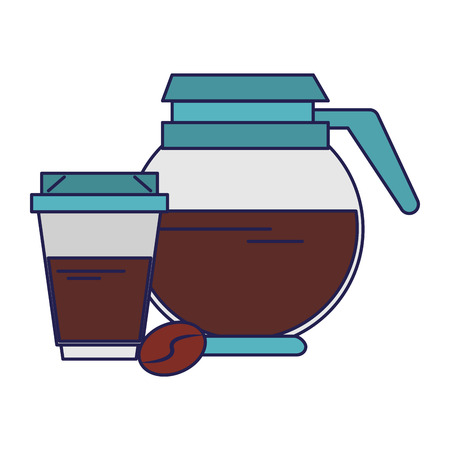1. Why Cleaning Your Grinder Matters
If youre serious about your coffee, keeping your grinder clean is one of the easiest ways to improve your daily brew. Over time, coffee oils and fine grounds build up inside the grinder, which can affect flavor, performance, and even the lifespan of your machine. Whether youre using a blade grinder or a burr grinder, regular cleaning makes a noticeable difference in taste and consistency.
Enhance Flavor
Old coffee residue can go stale and bitter, mixing in with freshly ground beans and throwing off the flavor of your brew. A clean grinder ensures that each cup tastes exactly how it should—fresh, balanced, and true to the bean’s profile.
Extend Machine Life
Grinders are an investment. Just like any appliance, they work best when maintained properly. Built-up oils and debris can clog components or cause unnecessary wear on the motor. By keeping it clean, you help prevent breakdowns and extend the life of your equipment.
Improve Brewing Consistency
A dirty grinder can lead to uneven grinding because old grounds may block burrs or blades. Inconsistent grinds mean inconsistent extraction, which leads to underwhelming coffee. Clean grinders deliver uniform grind sizes for better brewing results every time.
Common Effects of a Dirty Grinder
| Issue | Impact on Coffee |
|---|---|
| Stale Grounds | Bitter or sour flavors in your brew |
| Clogged Burrs or Blades | Inconsistent grind size, slower performance |
| Oil Buildup | Rancid taste over time |
| Mechanical Wear | Shorter lifespan of grinder parts |
Quick Tip:
If you notice your coffee tasting “off” or your grinder making unusual noises, its probably time for a deep clean. Regular maintenance helps avoid these issues altogether.
Taking just a few minutes to clean your grinder each week can make a world of difference in both flavor and performance. Its one of the simplest steps toward becoming a better home barista.
2. Signs It’s Time to Clean Your Grinder
If you want your coffee to taste fresh and delicious every time, keeping your grinder clean is a must. But how do you know when it’s time to give it some TLC? Here are the most common signs that your coffee grinder needs cleaning.
Unusual Noises
Your grinder should sound smooth and consistent while running. If you start hearing strange grinding, rattling, or high-pitched squeals, it could mean there’s a buildup of old coffee oils or debris around the burrs or blades. This can affect performance and even damage the motor over time.
Stale or Off Smells
Freshly ground coffee should smell rich and inviting. If your grinder gives off a stale, rancid, or burnt smell, it’s likely due to leftover oils from previous grinds going bad. These odors can transfer into your coffee and negatively impact the flavor.
Inconsistent Grind Size
A good cup of coffee depends on a consistent grind size. If youre noticing uneven grounds—some too fine, others too coarse—your grinder might be clogged or dirty. Old particles can interfere with the burrs’ precision.
Coffee Tastes Off
If your brew suddenly tastes bitter, flat, or just not right—even though youre using your usual beans and method—it may be because old residue in the grinder is affecting the flavor. A quick clean could bring back that great taste you’re used to.
Quick Reference Table: When to Clean Your Grinder
| Sign | What It Means |
|---|---|
| Noisy Operation | Buildup inside causing mechanical stress |
| Stale Smell | Old oils and grounds turning rancid |
| Poor Grind Consistency | Burrs blocked by residue |
| Coffee Tastes Different | Dirt and buildup altering flavor profile |
A Good Rule of Thumb:
If you use your grinder daily, aim to give it a light clean once a week and a deep clean at least once a month. Noticing any of the signs above? Don’t wait—your next cup will thank you.

3. Tools and Materials You’ll Need
Before you dive into cleaning your coffee grinder, it’s important to gather the right tools and materials. Having everything ready makes the process smoother and ensures you don’t miss any steps. Heres a simple checklist of essentials that will help you clean and maintain your grinder effectively.
Must-Have Cleaning Tools
These are the core items youll need to keep your grinder in top shape:
| Tool/Material | Purpose |
|---|---|
| Grinder Brush | Removes leftover grounds and dust from burrs and other hard-to-reach areas. |
| Soft, Lint-Free Cloth | Wipes down exterior surfaces without scratching. |
| Vacuum or Handheld Air Blower | Sucks up or blows out fine particles stuck inside the grinder. |
| Food-Safe Cleaning Tablets | Cleans internal burrs without needing to take the grinder apart. |
| Mild Dish Soap (Optional) | Used for washing removable parts like hoppers or containers. |
Optional But Helpful Extras
- Cotton Swabs: Great for tight corners and crevices.
- Bamboo Skewers or Toothpicks: Useful for dislodging stubborn grounds.
- Compressed Air Canister: An alternative to a vacuum or air blower for clearing out fine debris.
Pro Tip:
If youre using cleaning tablets, make sure they’re specifically designed for coffee grinders—not espresso machines. Always follow the manufacturer’s instructions on how often to use them and how to run them through your machine properly.
Keep This Checklist Handy
You might want to print or save this checklist so you can easily reference it next time you’re giving your grinder a deep clean. Having the right tools on hand makes all the difference in keeping your coffee tasting fresh and your grinder running smoothly.
4. Step-by-Step Cleaning Process
Keeping your coffee grinder clean isn’t just about hygiene—it also ensures consistent flavor in every cup. Whether you have a burr grinder or a blade grinder, following a simple cleaning routine can make a huge difference. Here’s how to tackle both deep cleans and quick maintenance with ease.
Burr Grinder Cleaning
Quick Maintenance (Weekly)
This process is great for regular upkeep to prevent oil and grind buildup:
- Unplug the grinder.
- Remove the hopper and empty any remaining beans.
- Use a dry brush or soft cloth to sweep out loose grounds from the burrs and chamber.
- Wipe down the exterior with a damp cloth (avoid using water inside).
Deep Cleaning (Monthly)
For a more thorough clean, follow these steps:
- Unplug the grinder and disassemble removable parts like the hopper and upper burr.
- Wash the hopper and any plastic or glass parts with warm soapy water. Rinse and let them dry completely.
- Use a vacuum or compressed air to remove fine particles from hard-to-reach areas.
- If your grinder supports it, remove both burrs to scrub off oil residue using a soft brush or toothbrush.
- Reassemble once everything is dry.
Blade Grinder Cleaning
Quick Maintenance (After Each Use)
This fast routine keeps your blade grinder fresh between uses:
- Unplug the grinder.
- Wipe out leftover grounds using a dry paper towel or small brush.
- Avoid using water directly on blades—moisture can lead to rust over time.
Deep Cleaning (Weekly or Biweekly)
To give your blade grinder a deeper clean:
- Add about ¼ cup of uncooked white rice into the grinding chamber.
- Grind until the rice becomes powdery—this helps absorb oils and leftover particles.
- Discard the rice powder and wipe out the chamber with a clean, dry cloth.
Cleaning Frequency Table
| Grinder Type | Quick Maintenance | Deep Clean |
|---|---|---|
| Burr Grinder | Weekly | Monthly |
| Blade Grinder | After Each Use | Weekly or Biweekly |
Troubleshooting Tips During Cleaning
- If grinder smells stale: Run rice through it, then wipe thoroughly.
- If burrs are stuck: Check for trapped stones or hard beans before forcing them apart.
- If blades look dull: Consider replacing your blade grinder—the blades typically aren’t sharpened manually.
A clean coffee grinder delivers better-tasting coffee, prevents mechanical issues, and extends the life of your equipment. Stick to this easy schedule, and your morning brew will thank you!
5. How Often Should You Clean Your Grinder?
Keeping your coffee grinder clean isn’t just about hygiene—it’s about flavor, too. Coffee oils and fine grounds can build up over time, affecting the taste of your brew and even causing mechanical issues if left unchecked. But how often should you actually clean it? The answer depends on a few key factors: how often you brew, the type of coffee you use, and the specific grinder model you own.
How Often Do You Brew?
If youre grinding beans daily for multiple cups of coffee, your grinder is working hard—and it needs more frequent cleaning. On the other hand, if youre an occasional weekend brewer, you can space out cleanings a bit more. Heres a quick guide:
| Brewing Frequency | Recommended Cleaning |
|---|---|
| Daily (Multiple Times) | Quick clean weekly; deep clean monthly |
| Daily (Once a Day) | Quick clean every 1–2 weeks; deep clean monthly |
| A Few Times a Week | Quick clean bi-weekly; deep clean every 6–8 weeks |
| Occasionally (1–2 times per week) | Quick clean monthly; deep clean every 2–3 months |
The Type of Coffee Matters
The kind of beans you use plays a big role in how quickly residue builds up. Oily dark roasts tend to leave behind more grime compared to light or medium roasts. If you’re a fan of French roast or espresso blends, plan to clean more often.
Grind Size Also Affects Build-Up
Finer grinds used for espresso or Turkish coffee can clog burrs and leave more dust inside your grinder than coarser grinds used for French press or cold brew. Keep this in mind when setting your cleaning schedule.
Your Grinder Model Makes a Difference
Burr grinders typically need more maintenance than blade grinders because they have more parts and tighter spaces where grounds can hide. Some high-end models come with self-cleaning features or are easier to disassemble, making regular upkeep simpler.
General Cleaning Tips by Grinder Type:
| Grinder Type | Cleaning Frequency | Notes |
|---|---|---|
| Burr Grinder (Manual or Electric) | Quick clean every 1–2 weeks; deep clean monthly | Disassemble burrs and brush thoroughly; avoid water unless manufacturer-approved |
| Blade Grinder | Wipe after each use; deep clean bi-weekly to monthly | Simpler design but prone to oil buildup; use rice grind trick occasionally for deeper cleaning |
| Espresso Grinder | Quick clean weekly; deep clean every 2–4 weeks | Frequent use means quicker buildup—stay consistent with maintenance |
By adjusting your cleaning routine based on how often you brew, what kind of coffee you enjoy, and the grinder you use, youll keep your machine running smoothly—and your cup tasting great.
6. Tips to Keep Your Grinder Running Smoothly
If you want your coffee grinder to last for years and keep delivering consistent grinds, a little preventative care goes a long way. Here are some simple tips and hacks to help you maintain peak performance and avoid unnecessary wear and tear.
Store It Right
Where and how you store your grinder matters. Moisture, heat, and dust can all negatively affect its components.
- Keep it dry: Store your grinder in a cool, dry place away from steam (like stovetops or dishwashers).
- Avoid direct sunlight: Heat can warp plastic parts or damage electronic components.
- Use a cover: If your grinder didn’t come with one, consider using a small kitchen towel or buying a dust cover to prevent particles from settling inside.
Stick to the Right Beans
Certain types of beans can cause more buildup or even damage over time. Heres what to watch out for:
| Bean Type | Effect on Grinder | Recommendation |
|---|---|---|
| Oily Dark Roasts | Leaves residue on burrs and clogs the grinder | Use sparingly and clean frequently |
| Flavored Coffee Beans | Sugary coatings can stick to parts and create gunk | Avoid or use a separate grinder |
| Dry Light Roasts | Less oil, easier to clean up after grinding | Great for everyday use |
Create a Cleaning Schedule
A regular cleaning routine is key. You don’t need to do a deep clean every day, but sticking to a schedule helps prevent buildup.
Suggested Cleaning Frequency
| Usage Level | Cleaning Frequency |
|---|---|
| Daily (Home Use) | Quick brush-out weekly; deep clean monthly |
| Occasional Use (Few times/week) | Quick brush-out biweekly; deep clean every two months |
| Café/Commercial Use | Quick clean daily; deep clean weekly |
Avoid Overloading the Hopper
Piling in too many beans can strain the motor. Instead, measure what you need for each brew session. This also keeps beans fresher longer since they’re not sitting exposed in the hopper.
Tighten Loose Parts Periodically
If your grinder starts making strange noises or vibrating more than usual, check for loose screws or parts. A quick tightening can make a big difference in performance and longevity.
Use Grinder Cleaning Pellets Occasionally
Coffee-specific cleaning pellets like Urnex Grindz are great for removing hidden oils and residue without disassembling your grinder. Just run them through the machine like coffee beans, then follow with two rounds of regular beans to clear out any residue.
Pro Tip:
If youre switching between different bean types (e.g., espresso vs. French press), give your grinder a quick wipe-down or run a few grams of throwaway beans through it first to avoid flavor crossover.
Treat your grinder well, and it’ll reward you with consistently delicious coffee every time you brew.

